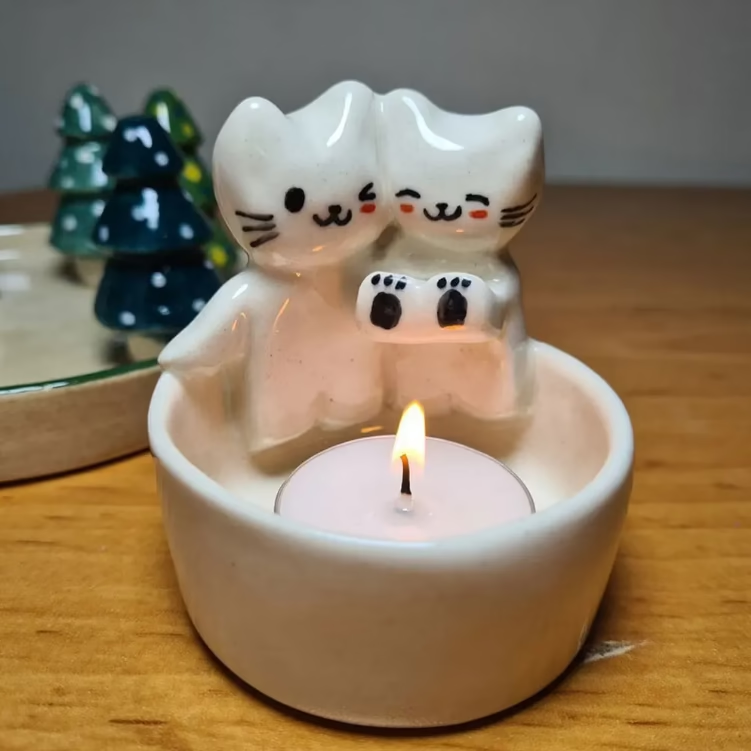October usually awakens in us a desire for eerie, spooky, supernatural stories. That’s probably because on the last night of the month, when the veil between the living and the dead is thinnest, and the spirits can come into our world to partake in – or just take – our lives.
Halloween has its roots in the ancient Celtic festival called Samhain (pronounced sow-in). Samhain is a Gaelic word meaning ‘end of the summer’, and, like its modern counterpart, it was celebrated around 31 October. The celebration marked the end of the summer and harvest season and the beginning of winter – a time associated with death.
At that time, people already disguised themselves and carved vegetables into lanterns (does that ring a bell?). Back then, however, they did it to ward off harmful spirits, not to go partying.
Now, let’s move into the fun part – 13 fiction books to spook you down to the bone and spice up your October.
Halloween and Horror Short Story Collections
Affiliate links used here. We may earn a small commission at no cost to you.
1. The Mammoth Book of Halloween Stories (2018)
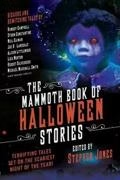
- Genre: Folk Horror / Short Stories
- Tropes: Cursed Nights, Haunted Traditions, Spirits Among Us
This substantial anthology edited by Stephen Jones brings together twenty-six chilling tales from masters of horror and dark fantasy, including Neil Gaiman, Angela Slatter, Ramsey Campbell, and Robert Silverberg.
Each story explores a different facet of the Halloween season – from eerie folklore to modern-day hauntings – offering a wide range of tones and styles. It’s great for readers who prefer variety and atmosphere over gore, and who enjoy seeing how different authors interpret the same night of ancient fears and festive mischief.
If you like the idea of dipping in and out of stories that build the spirit of the season, this collection provides plenty to keep the lights on. It captures the sense that something otherworldly is just outside your window, waiting for All Hallows’ Eve.
2. Halloweird: Classic Stories from the Season of Samhain (2019)
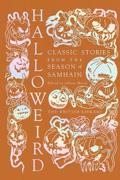
- Genre: Gothic Horror / Folklore Anthology
- Tropes: Celtic Spirits, Autumn Rituals, The Thin Veil
Edited by Peter Haining, this anthology celebrates the Celtic roots of Halloween through a curated selection of ghostly and uncanny tales drawn from Irish and British traditions. It reconnects the modern holiday with its Samhain origins – a time when spirits crossed between worlds and the boundaries of reality blurred, as we mentioned above.
Rather than jump scares, Halloweird offers slow-burning atmosphere and folkloric strangeness. The stories evoke bonfires on misty moors, half-forgotten rituals, and the uneasy beauty of the turning year. It’s a fitting choice for readers who want their Halloween reading to feel both historical and hauntingly authentic.
Advertisement: BigMe – The Best E-Ink Tablets For Reading And Note-Taking
Haunting Tales with Strange Teenagers
3. The Graveyard Book by Neil Gaiman (2008)
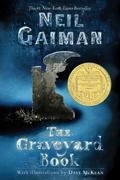
- Genre: Fantasy, Horror, Young Adult
- Tropes: Ghost story, Coming-of-age, Supernatural guardianship
Appropriate for people of all ages, The Graveyard Book offers a unique blend of whimsical fantasy and eerie horror as it follows young Nobody Owens, a boy raised by ghosts in a graveyard after his family is tragically murdered.
The novel intertwines a coming-of-age narrative with supernatural elements, providing both haunting moments and subtle humour. Its atmospheric setting enhances the mood for a Halloween read that invites reflection on life, death, and the boundaries between them.
The story’s structure, split into episodes exploring different supernatural encounters and lessons, creates a layered experience that shifts from mysterious to tender. Gaiman’s skilful storytelling captures the curious and occasionally unsettling world of the dead, making the novel a captivating exploration of what it means to belong somewhere – just beyond the veil of the living.
4. Goth by Otsuichi (2002)

- Genre: Psychological Horror, Thriller
- Tropes: Serial killers, Dark secrets, Twisted morality
Goth is dark, unsettling, and explores the macabre. It delves into the shadows of teenage fascination with death through two high school students entangled by their shared obsession with murder.
This novel stands out for its psychological depth and unnerving atmosphere rather than overt gore or conventional horror scares. It challenges readers with its exploration of human darkness and moral ambiguity, perfect for those who favour a more cerebral form of horror – typical (and stunning) Japanese horror.
The narrative’s tension is amplified by its exploration of the characters’ eerie attractions to sinister acts and their attempts to understand the depths of human cruelty. Otsuichi’s concise prose and sudden plot twists ensure that Goth remains gripping and disturbing, firmly stamping its place as a contemporary psychological thriller suitable for a reflective Halloween reading list.
History Flavoured
5. Guy Fawkes; or, The Gunpowder Treason by William Harrison Ainsworth (1841)
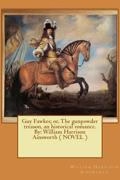
- Genre: Historical Fiction, Thriller
- Tropes: Conspiracy, Political Intrigue, Historical Reenactment
Guy Fawkes; or, The Gunpowder Treason retells the infamous plot to blow up the English Parliament in 1605. The novel captures the tense atmosphere of the time, blending real events with dramatic flair. Its gripping portrayal of conspiracy and betrayal makes it an engaging read for anyone interested in the darker side of history, especially as fireworks and bonfires mark the season around Guy Fawkes Night.
The narrative brings to life the motivations and fears driving the plotters, while exploring themes of loyalty and rebellion. Even though it is not outright horror, Ainsworth’s vivid descriptions paint a cool picture for a Halloween read with its gothic atmosphere, supernatural elements like ghosts and necromancy, and the eerie, mysterious vibe that surrounds this time of year.
6. The Halloween Tree by Ray Bradbury (1972)
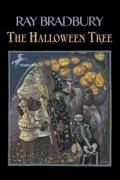
· Genre: Dark Fantasy / Adventure
· Tropes: Race Against Time, Historical Journey, Personification of Death
Ray Bradbury’s The Halloween Tree is a captivating journey through the history and traditions of Halloween, following a group of children on a quest to save their friend. The story cleverly weaves folklore from around the world into an adventurous tale that balances spooky and enlightening moments. Its thoughtful yet accessible tone invites readers to reflect on how cultures celebrate life, death and the supernatural.
Bradbury’s skilful storytelling and richly detailed scenes make this a perfect choice for readers wanting something that goes beyond simple scares. The book delivers a blend of mystery and wonder that honours Halloween’s deeper roots while keeping the sense of fun alive.
Women Authors Scaring the Hell Out of Readers
7. The Little Stranger by Sarah Waters (2009)

- Genre: Gothic Horror, Psychological Thriller
- Tropes: Haunted House, Post-War Decline, Unreliable Narrator
The Little Stranger offers a chilling ghost story set in a crumbling country manor in post-World War II England. The novel carefully weaves gothic atmosphere with psychological suspense, centred on Dr Faraday, who becomes entangled with the once-grand Ayres family and their slowly decaying estate. As strange occurrences escalate, the tension builds around what may be supernatural forces or the darker recesses of human nature.
The story explores themes of class, memory, and the decline of old English estates, making it far more than your usual haunted house tale. Waters’ restrained style creates a creeping sense of dread, with key hauntings and tragic events occurring around the autumn and winter, particularly on Guy Fawkes Night (November 5th), a British holiday with a bonfire-and-fright atmosphere similar to Halloween.
8. Mother Is Watching by Karma Brown (2024)
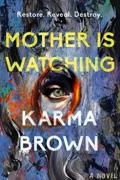
Genre: Psychological Horror, Supernatural Thriller
Tropes: Haunted Art, Occult Pregnancy, Psychological Unravelling
Karma Brown’s book follows art conservator Tilly Crewson as she restores a mysterious, damaged painting known as ‘The Mother’. Soon after, unsettling and terrifying events begin to unfold, including hallucinations, insect swarms, and eerie visits from her deceased mother. The novel blends psychological horror with supernatural elements to explore obsession, trauma, and the unsettling overlap between reality and nightmare.
This story’s modern setting and atmospheric tension provide a fresh take on classic horror themes. With its psychological depth and creeping menace, Mother Is Watching is a gripping tale for readers seeking a haunting, slow-burning thriller this Halloween.
9. Wake by Elizabeth Knox (2019)
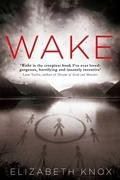
- Genre: Horror, Apocalyptic Thriller
- Tropes: Invisible Barrier, Survival, Psychological Horror
Wake by Elizabeth Knox is a gripping and thought-provoking story that explores a small community’s fight for survival after a mysterious and catastrophic event. The story begins with a striking fire and descends into chaos as the survivors – ranging from a police officer to a teenager – delve into a terrifying situation where an invisible barrier surrounds their town, trapping them inside.
The novel is praised for its intense pace, richly developed characters, and its ability to transport readers into a surreal, unsettling world. Knox masterfully blends horror with survival drama, prompting reflection on human nature when faced with the unknown and deadly threats. People who read it have even questioned what was real and what might be a nightmare, making Wake a highly recommended read for those who enjoy fiction that’s as emotionally intense as it is deeply disturbing.
Advertisement: Shop the Cutiest Candle Holders You’ll Ever Find
Modern Horror Novels for Sheer Fear
10. The Halloween Man by Douglas Clegg (1998)
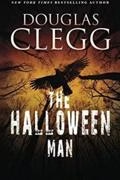
- Genre: Supernatural Horror, Thriller
- Tropes: Haunted Past, Sinister figure, Midnight Resurrection
Douglas Clegg’s The Halloween Man is a chilling tale made for the season. It follows a small town haunted by a mysterious figure known as the Halloween Man, a sinister entity with a gruesome past. As the night of All Hallows’ Eve approaches, dark secrets surface, and the line between the living and dead becomes dangerously thin. The story delves into themes of retribution, the power of folklore, and the enduring darkness that lurks beneath a seemingly quiet town.
Clegg’s writing skillfully creates suspense and dread, building an atmosphere that is both unsettling and irresistibly gripping. With its mix of supernatural intrigue and classic horror elements, The Halloween Man offers a compelling and eerie read for anyone looking to add a touch of frightful fun to their Halloween season.
11. Blood Covenant by Alan Baxter (2016)

- Genre: Horror, Thriller
- Tropes: Hostage situation, Ancient evil, Isolated Setting
Even if Blood Covenant isn’t directly tied to Halloween, it is a crime-meets-horror story with unexpected pics to keep your list fresh.
The book opens with a botched robbery that leaves criminals on the run, taking refuge in a remote lodge in the Australian bush just as the Moore family arrives to prepare for the tourist season. What seems like a straightforward hostage situation quickly escalates when an ancient and malevolent force is awakened by spilt blood. As tensions rise between the desperate criminals and the family, a supernatural horror begins to take hold, turning the isolated spot into a deadly trap.
The novel blends intense thriller elements with supernatural dread, creating a mounting sense of fear rooted in both human violence and something far darker lurking within the lodge. Baxter’s sharp pacing and vivid characterisation build a story that keeps you on edge, making it a haunting read for the season that delves beyond typical horror into the territory of ancient evil and survival under extreme pressure.
12. The Dead Children’s Playground by James Kaine (2022)
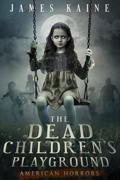
- Genre: Supernatural Horror, Ghost Story
- Tropes: Haunted Playground, Children’s Spirits, Dark Past
The Dead Children’s Playground by James Kaine is a chilling tale set around a mysterious playground next to Maple Hill Cemetery, where the spirits of children who died from the Spanish Flu and a twisted serial killer are said to linger.
The story follows nine-year-old Kylie Macklin, newly in remission from cancer, who is drawn into playing in a place that feels undeniably haunted. Her sister Kayla, reluctant and wary, notices worrying signs and begins to investigate, uncovering a dark history that threatens to consume them both.
Kaine’s tale expertly combines elements of ghost stories with a deeper reflection on trauma and loss. The atmosphere is tense and foreboding, making it a great choice to evoke a sense of eerie wonder and dread during the Halloween season.
13. Camp Damascus by Chuck Tingle (2023)

- Genre: Psychological Thriller, Supernatural and Queer Horror
- Tropes: Religious Trauma, Repressed Identity, Demonic Possession
Camp Damascus centres on Rose, a young autistic woman who begins experiencing terrifying hallucinations linked to her repressed memories of attending a notorious gay conversion camp. As demonic figures haunt her reality and those around her face fatal consequences, Rose uncovers a dark truth: the camp uses supernatural forces to enforce its cruel agenda.
The story explores trauma, identity, and resistance underpinned by a sinister mix of religious fanaticism and otherworldly horror.
Tingle’s novel uses supernatural horror to illuminate the real-life horrors of conversion therapy, blending upsetting imagery with a tense psychological narrative. Rose’s journey features modern horror with real-world fears, where she both fights for truth and reckons with the demons – literal and metaphorical – that seek to control and punish her, creating a haunting and thought-provoking read for Halloween.
But How did Samhain become Halloween After All?
Historians say that Halloween was born from the Christianisation of Samhain by the early Church to replace pagan festivals with a Christian celebration.
It was common practice for church missionaries to choose dates for their new religious festivals at times of year that would absorb existing pagan practices to make native people convert to Christianity more easily – just ‘good old’ cultural appropriation.
To appropriate Samhain, the Christian All Hallows Day – also known as All Saints Day, a day to honour all holy spirits – was changed from 13 May to 1 November. The Church also established a vigil for the holy day on the night of 31 October, calling it All Hallows Eve. People were meant to fast and pray all night.
Well, the fasting and prayer didn’t stick, but pagan and Christian traditions merged naturally, just like the expression All Hallows’ Eve into Hallowe’en. Over time, commercial influences, folklore, horror, harvest, and pop culture all blended, although they can still be scary – terrifying indeed.
Dare to Read? One Last Warning
I hope one (or more) of these titles will keep you company during October and beyond. But be prepared: if you read any of them, you may end up practising the All Hallows’ Eve vigil this year – because you won’t be able to sleep.
Advertisement: The Best 6″ Colour eReader with Case














